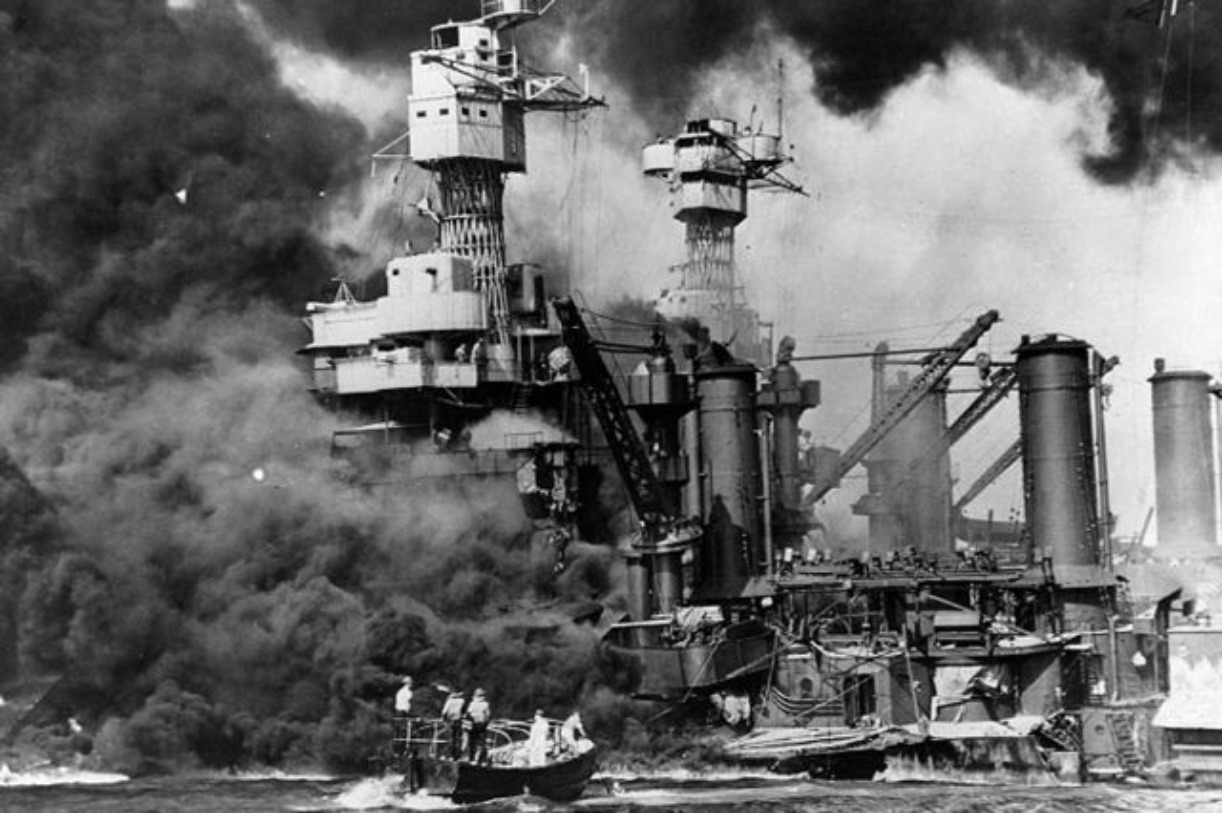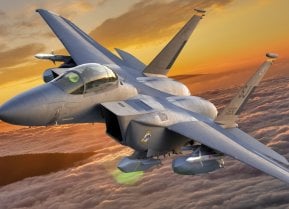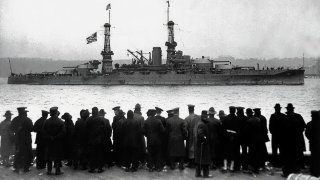USS Arizona: The U.S. Navy's Most Famous Battleship (For the Wrong Reason)
Among American battleships, the Navy's USS Arizona is notably remembered, not for its achievements but for its tragic demise during Japan's surprise attack on Pearl Harbor.
Summary: From the late 19th century to the mid-20th century, battleships were the most formidable naval vessels, symbolizing global power before aircraft carriers took precedence. Among American battleships, the USS Arizona is notably remembered, not for its achievements but for its tragic demise during Japan's surprise attack on Pearl Harbor. Built in the 1910s and commissioned in 1916, the Arizona was already outdated by World War II, designed for a previous era's conflicts. It served various peacetime roles, from training missions to aiding earthquake relief and even appearing in a Hollywood film. Stationed in Hawaii in 1940 as a deterrent to Imperial Japan, its specifications were modest by WWII standards, with notable armaments but limited speed. The Arizona met its end during the Pearl Harbor attack, with a catastrophic explosion that killed 1,177 sailors, becoming a poignant memorial to those lost in the attack.
Meet the U.S. Navy's USS Arizona Battleship
From the end of the nineteenth century through the first half of the twentieth century, the battleship was the world’s preeminent vessel.
In navies worldwide, before the aircraft carrier rose to prominence, the battleship was deployed to project power globally, with impressive firepower and matching armor.
For her part, America produced some of the world’s most revered battleships. But one American battleship is perhaps remembered above all else. Not for the vessel’s accomplishments or attributes, necessarily, but for the way she perished – during the Japanese surprise attack on Pearl Harbor. The battleship: the USS Arizona.
USS Arizona: Already Outdated
When Imperial Japan began to expand through the Indo-Pacific region, the USS Arizona was already outdated. The ship, build in the mid-1910s and commissioned in 1916, was of a World War I-era design.
Although Arizona did not participate in World War I, she did escort President Woodrow Wilson to the Paris Peace Conference.
The brunt of the Arizona’s service, of course, came during the interwar period, when the Arizona was used primarily for training missions. The highlights of the Arizona’s service were in 1919, when she was deployed to oversee US interests during the Greco-Turkish War.
In 1921, the Arizona was transferred to the Pacific Fleet, which she has since come to memorialize.
In 1933, the Arizona was deployed to help to assist domestically in providing relief after the Long Beach, California earthquake. And in 1934, the Arizona made her Hollywood debut in Here Comes the Navy, starring James Cagney.
In 1940, Arizona’s home port was changed – from California to Hawaii. Why? To deter the increasingly belligerent Imperial Japan, who the US feared might have designs on US territory.
The Specifications of the Arizona
By World War II standards, the Arizona’s specifications were not especially impressive. The second (and final) Pennsylvania-class battleship built, the Arizona was 608 feet long with a 97 foot beam and a 29 foot draft. Larger than the preceding Nevada class, the Arizona displaced 29.158 long tons at standard and 31,917 at deep load. The vessel operated with a crew of 56 officers and 1,031 enlisted men.
The Arizona’s power plant consisted of four direct-drive Parsons steam turbine sets, which propelled a 12-foot tall propellers using steam from 12 Babcock & Wilcox boilers. The turbines were expected to produce 34,000 shaft horsepower when designed, but once constructed, the turbines managed only 33,376 horsepower, which was capable of driving the Arizona forward at 21 knots.

The Arizona was armed with twelve 45-caliber 14-inch guns in triple gun turrets. And to defend against torpedo boats, the Arizona used twenty-two 51-caliber 5-inch guns mounted to the sides of the ship’s hull. For anti-aircraft defense, Arizona relied upon four 50-caliber 3-inch guns.
The Sinking of the Arizona
The Arizona was sunk with 1,177 sailors still aboard. Japanese aircraft from the aircraft carriers Kaga and Hiryu dropped 797-kilogram bombs, which scored four direct hits (and three near misses) on the Arizona. The final hit was the most devastating; piercing the armored deck and detonating the forward magazines – causing an explosion that burned hot enough to deteriorate the interior structure of the forward portion of the ship.
Today, the Arizona serves as a memorial to the lives lost during the Pearl Harbor attack.
About the Author: Harrison Kass
Harrison Kass is a prolific defense writer with over 1,000 pieces posted. An attorney, pilot, guitarist, and minor pro hockey player, Harrison joined the US Air Force as a Pilot Trainee but was medically discharged. Harrison holds a BA from Lake Forest College, a JD from the University of Oregon, and an MA from New York University. Harrison listens to Dokken.


